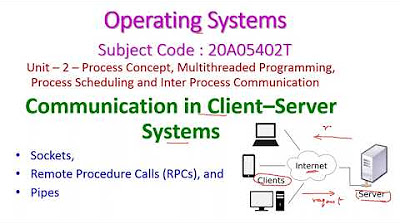pt1
Summary
TLDRThis session delves into the fundamentals of communication, defining it as a two-way process where information is exchanged through shared symbols and behaviors. It highlights key components including the sender, receiver, message, channel, feedback, and context. The discussion also addresses the impact of noise—both environmental and physiological—on effective communication. Understanding these elements is essential for successful interactions, emphasizing that clear communication is not only about the words spoken but also about the surrounding context and potential distractions.
Takeaways
- 😀 Communication is a two-way process involving the exchange of information between individuals.
- 💬 The definition of communication includes the use of symbols, signs, and behavior.
- 🔄 Feedback is an essential part of the communication process, indicating the involvement of both sender and receiver.
- 🗣️ The components of communication consist of the sender, receiver, message, channel, and feedback.
- 📡 The channel refers to the means through which the message is communicated, often utilizing our five senses.
- 🔍 Encoding and decoding are crucial steps in the communication process that ensure the message is understood.
- 🌐 Context refers to the setting or environment in which communication takes place, influencing how messages are interpreted.
- 🔊 Noise can hinder effective communication, with environmental noise being distractions from the surroundings.
- 🧏♂️ Physiological impairment noise relates to individual limitations that affect hearing, speaking, or seeing.
- 💡 Understanding these components and potential barriers can enhance communication effectiveness in various settings.
Q & A
What is the basic definition of communication according to the transcript?
-Communication is defined as a two-way process by which information is exchanged between individuals through a common system of symbols, signs, and behavior.
What are the two main parties involved in the communication process?
-The two main parties involved in the communication process are the sender, who initiates the message, and the receiver, who understands the message.
What types of messages can be communicated?
-Messages can include ideas, thoughts, feelings, and intentions.
What are the different forms of communication mentioned in the script?
-The forms of communication mentioned include small group communication, face-to-face communication, verbal communication, and non-verbal communication.
What are the five main components of communication outlined in the transcript?
-The five main components are the sender, the receiver, the message, the channel, and the context or setting.
What role does the channel play in the communication process?
-The channel is the means through which the message travels, often involving the use of our five senses.
What is the significance of feedback in communication?
-Feedback is important as it allows the receiver to respond to the sender, creating a two-way interaction that enhances understanding.
How does noise affect communication?
-Noise is any kind of interference that hinders the clear reception of the message and can occur at any time during the communication process.
What are some examples of environmental noise mentioned?
-Examples of environmental noise include distractions from people in hallways, sounds from other classrooms, or students engaged in other activities.
What is physiological impairment noise and how does it affect communication?
-Physiological impairment noise refers to communication challenges faced by individuals with hearing or speech impairments, which can affect their ability to engage in communication effectively.
Outlines

Cette section est réservée aux utilisateurs payants. Améliorez votre compte pour accéder à cette section.
Améliorer maintenantMindmap

Cette section est réservée aux utilisateurs payants. Améliorez votre compte pour accéder à cette section.
Améliorer maintenantKeywords

Cette section est réservée aux utilisateurs payants. Améliorez votre compte pour accéder à cette section.
Améliorer maintenantHighlights

Cette section est réservée aux utilisateurs payants. Améliorez votre compte pour accéder à cette section.
Améliorer maintenantTranscripts

Cette section est réservée aux utilisateurs payants. Améliorez votre compte pour accéder à cette section.
Améliorer maintenantVoir Plus de Vidéos Connexes
5.0 / 5 (0 votes)






